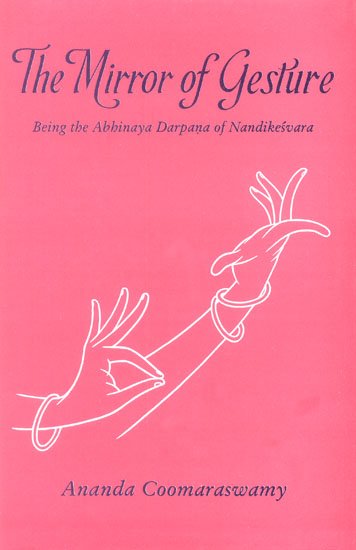Abhinaya-darpana (English)
by Ananda Coomaraswamy | 1917 | 16,981 words | ISBN-13: 9788121500210
The English translation of the Abhinaya-darpana (“the mirror of gesture”) by Nandikeshvara: an encyclopedic manual of the art of gesticulation. It belongs to a wide range of literature known as Natya-shastra: the ancient Indian art of dramatic performance, theatrics, dance and music. The Abhinaya Darpana is an abridgement of the Bharatarnava, a m...
Chapter 11 - Lives of the Hands
Lives of the Hands (hasta prāṇa).—The Lives (i. e. movements) of the Hands are twelve, as follows:
- Prasāraṇa,
- Kuñcita,
- Recita,
- Puṅkhita,
- Apaveṣṭita,
- Prerita,
- Udveṣṭita,
- Vyāvṛtta,
- Parivṛtta,
- Saṅketa,
- Cihna,
- Padārtha-ṭīka.[1]
Prasāraṇa (outspread): extending the fingers (e.g. Plate X a).
Kuñcita (bent, inclined): bending the fingers (e.g. Plate XI a).
Recita (separated): separating the fingers (e.g. Plate XI c, e).
Puṅkhita (feathered, or fluttering): the hand (directed) forward, (the fingers being) extended, bent, or separated (e.g. Plate XII b). This movement is used in Patāka and other hands.
Apaveṣṭita (twisted down): the hand directed downwards (e.g. Plate I, foremost hand and Plate XIII c, l.h.).
Prerita (directed): the hand turned back, (the fingers being) extended, bent, or separated (e.g. Plate VII D, XII a).
Udveṣṭita (twisted upwards): the hand directed (palm) upwards (e.g. Plates XI e, XII c, XIII d.)
Vyāvṛtta (turned back): the hand pointing upwards sideways (e.g. Plate VIII).
Parivṛtta (turned round): the hand directed forwards, sideways.
Saṅketa (intimation): communicating an idea without words.[2]
Cihna (mark): the various Cihnas are the marks of those things which are evident, and of those unseen, their state of movement or rest, and eight others, viz. their form, face, situation, banner, weapons, virtues, range, and habits, as set forth in dance.
Padārtha-ṭīka (word-meaning commentary): the meaning of words is conveyed.
Footnotes and references:
[1]:
The above-mentioned technical terms are used in the subsequent detailed description of the hands and in more detailed texts such as those quoted on p. 12 of the Preface. Nos. 5 and 7 are produced by turning the forearm on its own axis, so that the palm of the hand faces downwards (No. 5) or upwards (No. 7). In No. 8 the fingers point vertically upwards: in No. 9 the fingers point across the body.
[2]:
Akṣara-muṣṭikā, communicating letters or ideas by the disposition of the fingers, is one of the ‘sixty-four arts.’
